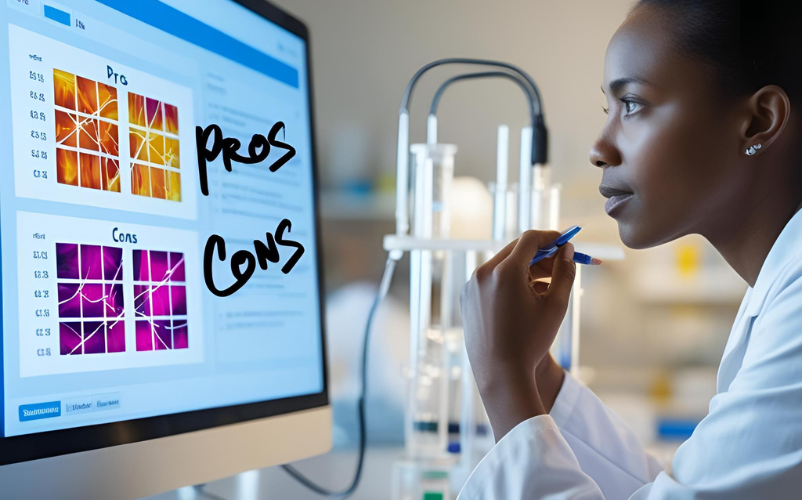Examining Pros And Cons Of Various LAL Testing Methods And Equipment
The introduction of bacterial endotoxins into the human circulatory system can induce a potent pyrogenic response, resulting in fever, inflammation, and potentially, septic shock. The outer membrane of Gram-negative bacteria harbors endotoxins, prevalent throughout the environment. Consequently, the routine testing of parenteral medical devices and pharmaceuticals for endotoxins is mandated. Globally accepted and included in the International Pharmacopoeia, the LAL assay is the definitive test for endotoxin detection, approved by regulatory authorities worldwide.[1]
Limulus amoebocyte lysate (LAL), a highly sensitive detection system for bacterial and fungal cell-wall components, is present in horseshoe crab blood cells. Notably, LAL assays have significantly advanced pharmaceutical and medical device quality control, effectively supplanting the rabbit pyrogen test.[2]
Different LAL assay Categories
Gel Clot
The gel-clot Limulus Amebocyte Lysate (LAL) test received approval from the Food and Drug Administration (FDA) during the 1970s and has since been extensively adopted as the authorised technique for detecting bacterial endotoxins. The LAL-test relies on the coagulation response of an enzyme complex derived from horseshoe crab cells, with bacterial endotoxins.[3]
Turbimetric
Subsequent to the addition of the LAL substrate reagent, each sample is thoroughly mixed and incubated within a 37 °C turbidimetric reader. Spectrophotometric devices, such as the Toxinometer® and microplate readers, facilitate automated monitoring throughout the subsequent incubation period. A negative correlation exists between the measured reaction time (turbidity development) and the endotoxin concentration within the sample.[4]
Chromogenic
Chromogenic methods are used to quantify the colorimetric response resulting from the enzymatic hydrolysis of a chromogenic substrate [4]. A new method has been developed to create a recombinant Cascade Reagent (rCR) by synthesizing and formulating the proteins of the LAL cascade.
Reagents for LAL testing
PYROSTAR™ ES-F series
Pros
The PYROSTAR™ ES-F reagents are specifically designed to react only with endotoxins, showing no reactivity toward (1→3)-β-D-glucan. Furthermore, these products serve a dual function, formulated for use as either a gel clot or a kinetic turbidimetric assay (KTA). Single-test and multi-test configurations are both available, offering users a choice based on their needs. These reagents are effective with colored samples or those challenging to quantify using the KCA method, offering vibrant color changes for easier visualization.
Cons
The PYROSTAR™ ES-F series may show a difference in sample concentration between single and multi-tests in the reaction solution, which could lead to inaccurate results due to uneven mixing and/or dilution. This inconsistency can be observed as a slight variation in final readings. In a single test, the sample directly dissolves the lysate reagent, while in a multi test, the two are mixed. This means that single tests may be more affected by the sample.
Limulus Color KY Series
Pros
The Limulus Color KY Series assays are designed to detect endotoxins specifically and do not react to (1→3)-β-D-glucan. The series offers both multi- and single-test kits, employing a synthetic substrate. A distinct yellow color reliably indicates endotoxin presence, even at low concentrations. A Control Standard Endotoxin (CSE) is provided with every reagent kit for quality control purposes. These reagents are especially effective with highly turbid samples or those that present challenges for quantification using the kinetic turbidimetric assay (KTA), offering improved clarity and more reliable results.
Cons
When conducting the test with the Toximeter, a larger quantity of LAL reagent is needed.
Limulus PS Single Test
Pros
The Limulus PS Single Test includes LAL endotoxin-specific single-test vials and PyroSep™, an innovative affinity resin suspension that targets and removes endotoxins from samples, ensuring accurate results. During product use, the endotoxin in the sample is drawn into the capillary column, where it adheres to the PyroSep™ adsorbent (histidine linked to a support via a spacer), a process that can be monitored visually or via instrumentation. The sample is carefully washed to remove any inhibitory substances, revealing the endotoxin that had been adsorbed and can now be measured using the single-test format LAL reagent.
Cons
The complexity of this test surpasses that of the others. Experienced endotoxin testers will find this method more suitable due to its complexity and requirement for specialized knowledge.
ES Buffer
Pros
The ES Buffer, perfect for untreated LAL, specifically targets endotoxins. Unlike other LAL reagents on the market, all LAL reagents from FUJIFILM Wako LAL are specifically designed to target endotoxins. Without this buffer, tests may yield a false positive due to interference, inaccurately reporting the sample's endotoxin concentration.
Non-Wako LAL reagents are also compatible.
Equipment for LAL Reagents
LAL Reagent Water
Pros
Derived from Water for Irrigation (WFI), LAL reagent water is suitable for meeting all requirements of endotoxin testing. Product dilutions are carefully made using LAL reagent water to guarantee the reliability and reproducibility of the data obtained with our endotoxin-specific LAL reagents.
Cons
Even a slight shift in the pH of LRW will significantly impact the final results, altering chemical reactions and potentially invalidating the experiment. The amount of added LRW significantly impacts the accuracy of endotoxin detection, influencing the sensitivity and reliability of the test. Even slight deviations from the recommended volume for a specific test can cause inaccurate, false-negative results.
Gel-Clot Reaction Tubes
Pros
The high-quality borosilicate glass of our Gel-clot Reaction Tubes undergoes a 250°C depyrogenation process, resulting in a superior, contaminant-free product. The resulting endotoxin-free tube is optimized for LAL gel clot assays, its design allowing for consistent performance with both heat blocks and water baths.
Cons
The gel clot reaction tubes are designed exclusively for the water bath or heating block and are not compatible with Toxinometer measurement systems.
Limulus Test Tube-S
Pros
The Limulus Test Tube-S are made with high-quality, 250°C-depyrogenated borosilicate glass for reliable, sterile testing. The precisely curved tubes allow the optimal amount of light to pass through the sample, enabling accurate endotoxin concentration measurement using the specified method. The curvature is critical for consistent results. This precisely calibrated glass tube, with its etched markings, is designed for use with the Toxinometer® Measurement System.
The Limulus Test Tube-S is versatile and can be utilized for water bath applications and heating blocks.
Cons
The tubes are pricier than Gel clot tubes and are packed with a maximum of 100 tubes per pack.
Summary
LAL reagents are globally accepted for endotoxin detection in pharmaceuticals and medical devices, gaining FDA approval and inclusion in pharmacopoeias worldwide. Despite some shortcomings, technical advancements and experience have enhanced the quality of its output.
References:
- Mehmood, Y., What Is Limulus Amebocyte Lysate (LAL) and Its Applicability in Endotoxin Quantification of Pharma Products. 2019.
- Tamura, H., J. Reich, and I. Nagaoka, Outstanding Contributions of LAL Technology to Pharmaceutical and Medical Science: Review of Methods, Progress, Challenges, and Future Perspectives in Early Detection and Management of Bacterial Infections and Invasive Fungal Diseases. Biomedicines, 2021. 9(5).
- Meisel, J., Determination of Pyrogens: Comparison of Different Methods. Altex, 1995. 12(2): p. 89-92.
- Flórez, P., et al., Intralaboratory Validation of a Kinetic Turbidimetric Assay Based on Limulus Amebocyte Lysate (LAL) for Assessing Endotoxin Activity in Cow Milk. Animals (Basel), 2023. 13(3).



